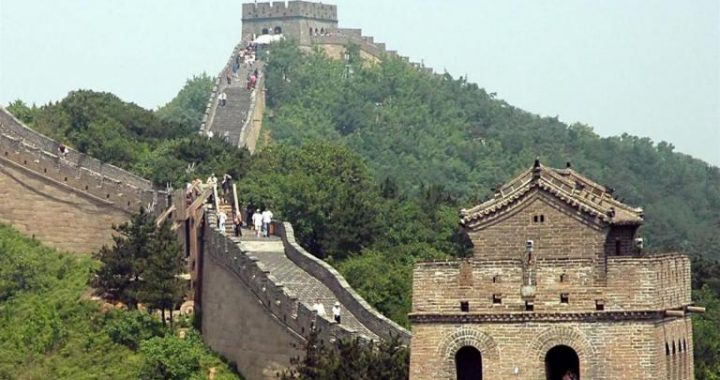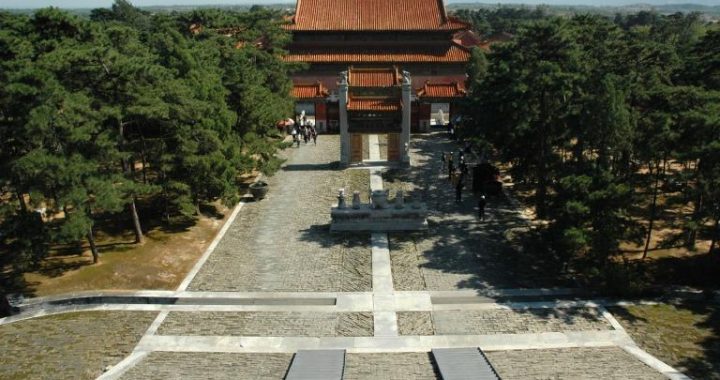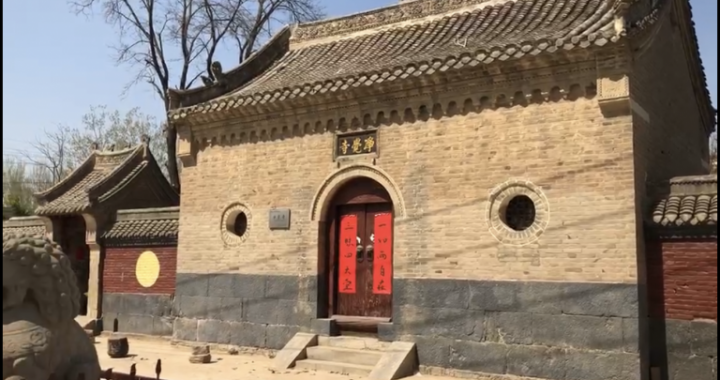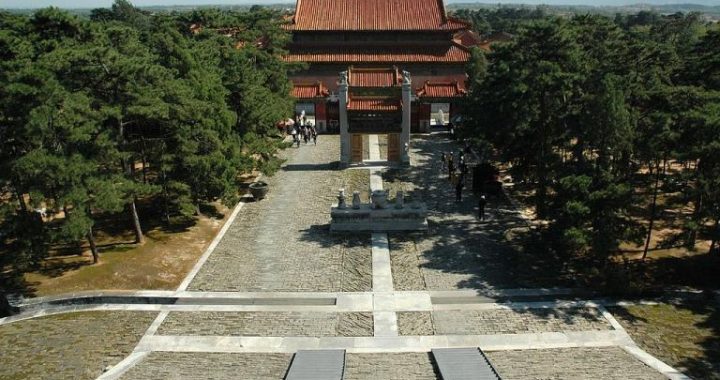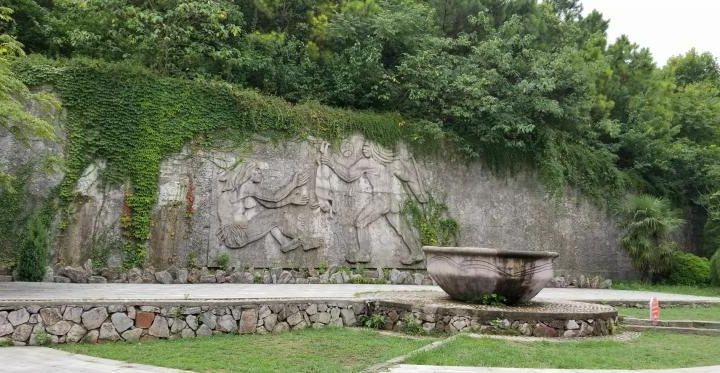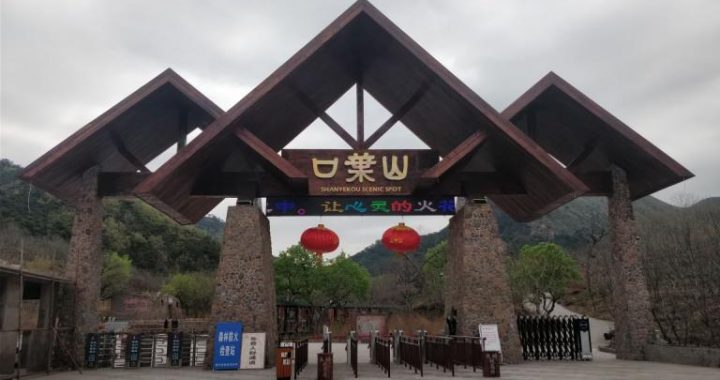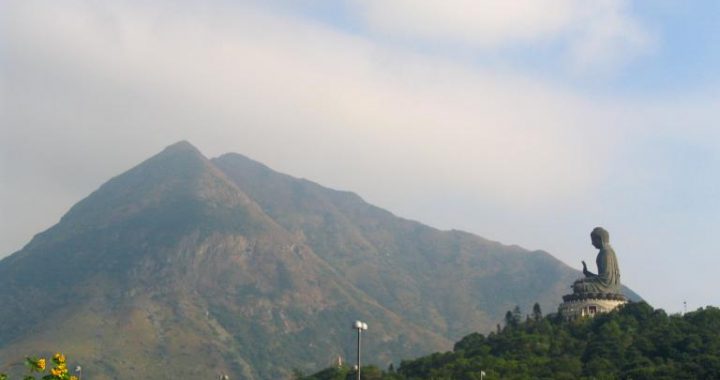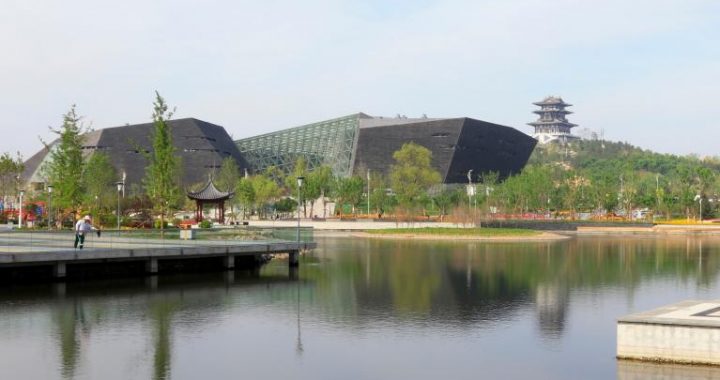Famous people in Tangshan in history
9 min readIn the long history Tangshan has seen a galaxy of elites born in this place. More than 40,000 years ago, there were ancient men living by the Luanhe River. Since then on a great number of elites and celebrities have boarded the historical stage and played scenes of serious dramas which shine in the long history of China.
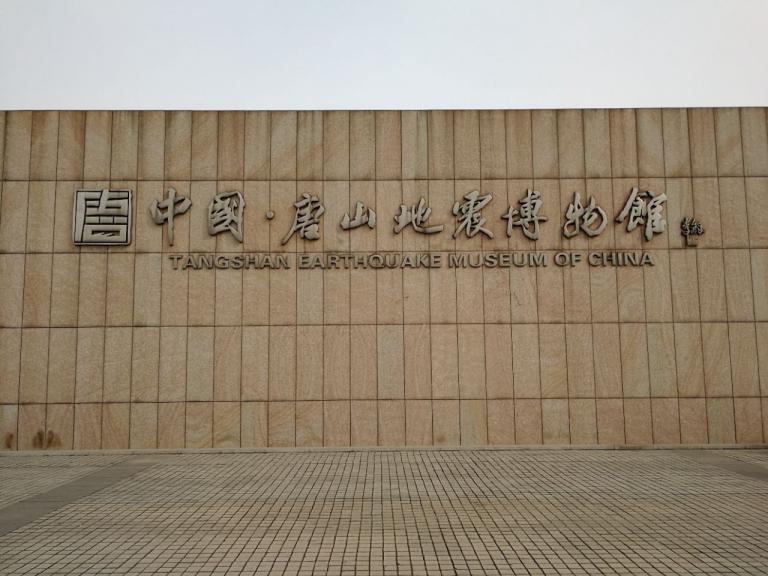
The most famous historical figure with written record was Xu Le(date of birth and death unknown) of Wuzhou County(today’s Yutian County), Yan Prefecture. Emperor Wudi of the Han Dynasty(202BC-AD220) launched a punitive expedition to Minyue(today’s south Zhejiang and Fujian provinces) and heavily consumed manpower and materials. The military operation and the continuous famine and crop failures in Guandong in consecutive years caused great hardship. Xu Le submitted a”Report on the World’s Affairs”to Emperor Wudi, pointing out that the Han Dynasty was facing the risk of collapse and reminding the emperor to amend the policies and be merciful to the people to prevent a Cheng Jin(date of birth and death unknown), an important minister of the Wu Kingdom during the Three Kingdoms Period(220-280),a native of Tuyin County, Beiping Prefecture(today’s Fengrun District), served as Imperial Corps Commander, Right Chief Command and Governor of Nanjun Prefecture during reign of Sun Jian, Sun Ce and Sun Quan, and was a pivotal figure in the military and political circles of the Wu Kingdom. Cheng was respected as”Master Cheng”for his noble character and high prestige.
Yang Gu (466-523),a writer from Wuzhong County, Beiping, of the Northern Wei Dynasty, was righteous and clean. Though he served as a general, Yang was utterly destitute and could not even afford a coffin when he passed away.
Han Qixian(1092-1146) was an outstanding politician and prime minister of Emperor Taizong and Shizong of the Jin Dynasty with his ancestral home in Yutian County, Jizhou Prefecture. His ancestor Han Zhigu served as head of the secretariat of the Liao Dynasty and Han Derang (941-1011) was appointed as prime minister and was in charge of the South and North Royal Councils entrusted by Emperor Shengzong and Empress Dowager Xiao of the Liao Dynasty. Han Qixian served as prime minister of the Jin Dynasty for nearly 20 years and was cited as “the most talented prime minister”by Emperor Shizong.
Ma Yong(date of birth and death unknown), was born in Daheiting Village, Qian’ an County, Yongping Prefecture(today’s Qianxi County) and was a talented general of the Ming Dynasty defending Zunhua and Jizhou. Ma was not only good at military affairs, but also very clean and well received by local people.
Gu Yingtai(1620-1690),a native of Fengrun County (today’s Fengrun District), Jizhou, Shuntian Prefecture, was a historian of the early Qing Dynasty. His work Historical Events from the Ming Period in Their Entirety was written more than 8o years before the official History of Ming and survived the literary inquisition. Thus some records of the book could complement the official tale. Cao Xueqin (1715-1764) was a famous author from the Qing Dynasty. He was the author of A Dream of Red Mansions and his ancestral home was in Fengrun. Cao completed the first 80 chapters of the great work in about ten years and amended it five times.”A Dream of Red Mansions”is a masterpiece of realism and the pinnacle of China’s classical novel.
Li Dazhao(1889-1927),a pioneer of the communist movement,a great Marxist, one of the founders of the Communist Party of China, was the greatest, the brightest and most representative elite of Tangshan when the new chapter in the history of China opened. Li was born in Daheituo Village, Laoting County. In 1916 Lilaunched the Chenzhong Newspaper and later worked as editor of Jiayin Daily and other magazines. Encouraged by the success of the October Revolution in Russia in 1917, Li studied Marxism and published articles to passionately promote Marxism and the OctoberRevolution, including such articles as”Comparison between the French Revolution and the Russian Revolution”,”Victory of the Common People”,”Victory of Bolshevism”and “My Marxist Outlook”. In 1920, Liinitiated and founded a Marxist theory seminar and communism team and became one of the major founders of the Communist Party of China.
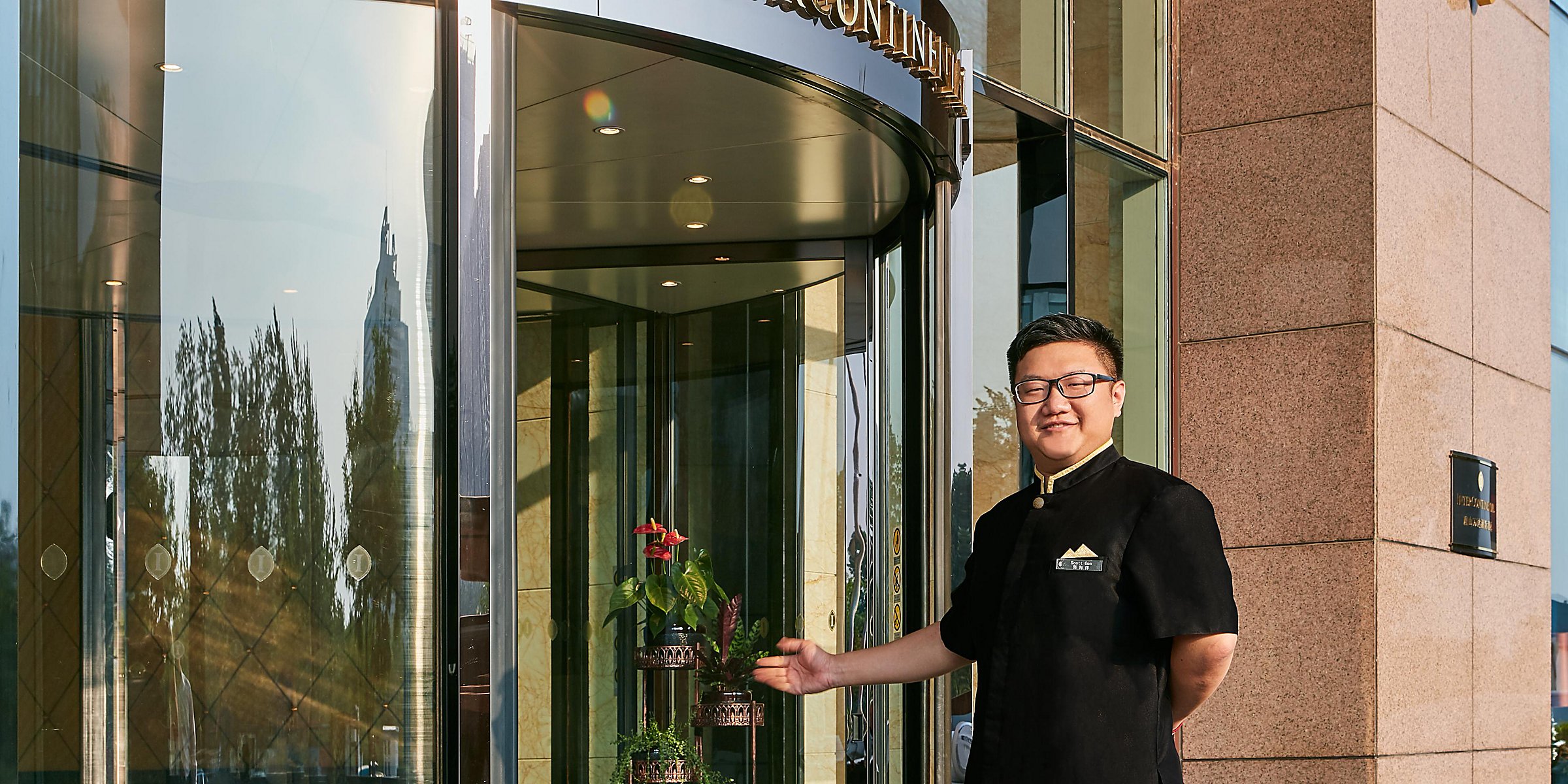
After the founding of the CPC, Li Dazhao directed works in north China on behalf of the CPC Central Committee. He also actively advocated for and promoted the first Kuomintang-CPC cooperation and contributed to the establishment of the anti-imperialist and anti-feudal revolutionary united front. In 1924, Liattended the 5th Congress of the Communist International and worked as representative of the CPC to the Communist International. On April 6,1927, warlord Chang Tso-lin sent armed polices to the embassy of Soviet Union and arrested more than 80, including LiDazhao. On April 28, Li was executed in a detention house in Beijing. He “stepped on the gallows with his look unchanged”and died a hero’s death calmly, only 38 years old.
Jie Zhenguo(1910-1940),a famous anti-Japanese hero, practiced Kung Fu from a young age and became a master. In the spring of 1938, he took part in the united strike of the Kailuan Coalmines andwas elected head of the workers’ picket. After the rebellion of Jidong(east Hebei province), the anti Japanese troop formed by miners was named No.1 Secret Agent Brigade directly under No.2 Army Headquarters of the anti-Japanese united army. Jie was appointed head of the brigade. In the autumn of 1939, Jie joined the CPC. On August 1,1940, Jie was unfortunately shot in a battle with Japanese in vaders and the puppet army and died a heroic death at the age of 30.
Pei Wenzhong(1904-1982),a famous paleontologist, archaeologist and founder of China’s paleolith archaeology, was born in Xijiege Village, Huituo Township, Fengnan District. In December 1929, Pei discovered the first ape-man skull fossil when he worked on excavation of Zhoukoudian. The epoch-making discovery pushed China’s history back to 400,000 to 500,000 years ago.
Cheng Zhaocai(1874-1929),a native of Luannan County, was the main founder of Pingju Opera, playwright and performance artist and his stage name was “Donglaishun”. Becoming a player of LotusRhyme at the age of 18, Cheng reformed the form of art along with Jin Juhua and other early Pingju Opera players and created the second largest opera of China. He wrote at least 102 Pingju plays in his life and the Flower as a Matchmaker, Du Shiniang(The Beautiful Courtesan), Wang Shaoan Courts A Fishing Girl, The Oil Vendor and the Courtesan and Yang Sanjie Files a Suit have been repeatedly played as traditional repertoire of Pingju Opera.
Yang xiufeng(1897-1983), born in Yangtuanbao Village, Qianan County(today’s Qian’ an) was a proletarian revolutionist, educator, jurist and an outstanding representative of intellectuals. After the Marco Polo Bridge Incident, Yang gave up his civilian pursuits and joined the army. He headed a group of students to Taihang Mountains for anti-Japanese bush-fighting. After 1949, Yang worked as chairman of the Hebei Provincial government, Minister of Education and president of the Supreme People’s Court.
Zhang Guanghou(1937-1987), born in Linxi, Guye District, was a famous mathematician. The Department of Mathematics of Peking University admitted Zhang in 1957. He later did postgraduate work with Prof. Xiong Qinglai from 1962. Working with Yang Lo, he made great achievements on the relation between the meromorphic functions value and Borel direction and value distribution theory of meromorphic functions, which was called Zhang-Yang Therom in international mathematic circles.
Song Zhide(1914-1956), born in Songjiaying, Fengnan District, was a dramatist and author. His maiden work was”Dawn on Morning News-Supplement”. In his short life, he created 40 plays, totaling about 2.5 million Chinese characters and a number of reportages, proses, novels, scribbles and dissertations.
Li Ying(1926-), contemporary poet, was born in Xihuantuo Village, Fengrun District. While studying in the university, Li published his first poetry anthology Gun and published 53 poems to 2006. His poem anthology I Am Proud I Am A Tree won the first prize in the national poem competition of the Chinese Writers Association in 1983, Smile of the Spring won the best poem in the 2nd good poem prize and In the Flaming Battlefield won the first prize in the PLA Literary Prize and the first prize in the essay competition.
Contemporary writer Hao Ran(1932-2008), formerly known as Liang Jinguang, was born in Zhaogezhuang, Tangshan, though his ancestral home was Baodi County (under the administration of Tianjin). In 1964 he published the novel Bright Spring Day, which reflects the agricultural cooperative movement. In 1970 he started another novel Golden Road. The novel The Common People wrote in 1987, which reflected the rural reform won the special prize at the first Chinese popular literature.
Zhang shengwu(1885-1966), born in Songshu Village, Luannan County, was a well-known shadow play artist and a co-founder of Tangju Opera. Zhang started to learn shadow play when he was 12 years old and his performance has lingering charm with vigorous and mellow aria. He was the first to make recordings and made more than 50 discs in his lifetime, the highest in the shadow play circle.
When Tangshan Opera School set up Tangju Opera in 1960, Zhang worked as the aria tutor though he was 75 years old.
Yue Meizhong(1900-1982), born in Xiaoyuege Village, Luanxian County, was a famous traditional Chinese medicine physician. Yue not only had profound knowledge of medical technology, but also high moral integrity, and was crowned as the best of the Top 4 Physicians of Tangshan. In 1956 he was transferred to Xiyuan Hospital of China Academy of Chinese Medical Sciences as chief physician and was in charge of the first traditional Chinese medicine research class. He had long been responsible for the healthcare and medical treatment of senior Party and state leaders and executed important medical treatment missions abroad upon orders.
When talking about the numerous talents of Tangshan, Tangshan Jiaotong University(Southwest Jiaotong University) must be mentioned. It is a technology university established following the indus-trial development of the modern times and one of the first technology universities in China, known as “the Cradle for Chinese Railway Engineers”and “East Cornell”.
Tangshan Jiaotong University was originally named Shanhaiguan Northern Railway Officer School or Imperial Chinese Railway College. The Northern Railway Administration established it in 1896(the 22nd year of the reign of Emperor Guangxu) as the first railway college of China. In September 1900 it was suspended because Shanhaiguan was invaded by the Eight-Power Allied Forces.
In 1905, the school was reconstructed in a new site in Tangshan. In 1906, the reconstructed railway school included a new department of mining and was renamed Tangshan Railway and Minging School.
In the following decades, the earliest technology school of China experienced name changes, mergers and cancellations under the names such as Tangshan Railway School, Tangshan School of Jiaotong University, Tangshan University of the Ministry of Transportation, Tangshan Jiaotong University, Jiaotong University Tangshan Civil Engineering College, National Tangshan College of Technology, etc.
In 1952, Tangshan College of Technology was renamed to Tangshan Railway College in the nationwide higher education institution adjustment. In 1971, the college moved to Emeishan, Sichuan Province and was renamed to Southwest Jiaotong University.
Tangshan Jiaotong University was famous for its educational philosophy and recorded outstanding achievements in China’s history of higher education. From summer to autumn of 1912, Yuehan Railway(Guangzhou-Wuchang) was recruiting engineers and technicians and more than 600 students from across China attended the examination. Among the only 28 admitted, all 23 students from Tangshan Railway School that applied were recruited. In 19 16, in the university student performance exhibition and competition held by the Ministry of Education of Beiyang Government, the school ranked first among 74 universities. Then Minister of Education especially awarded a board inscribed with the words”Si Shi Yang Hua”meaning “Cultivating Talents for the Rejuvenation of the Chinese Nation.”In 1916, Mao Yisheng graduated from school and was admitted by Cornell University to do a masters degree at state expense. Thanks to his excellent performance in the United States, graduatesfrom Tangshan School of Technology could be admitted by the graduate college of Cornell University without examination.
In the more than 60 years from its inception to settlement in Emeishan, Tangshan Jiaotong University had cultivated a number of senior technical talents. Among them, there are many CAS and CAE academicians, the recipients of the”Merit Medal for Two Bombs and One Satellite”, outstanding academic talents and engineering experts, officials of government, industrial leaders, excellent entrepreneurs, and numerous famous experts, professors and scholars such as Mao Yisheng, pioneer of China’s engineering mechanics and bridge expert, Zhu Kezhen, the founder of modern geographyand modern meteorology, meteorological geographer, Yang Xingfo, famous democracy fighter and cofounder of China League for Civil Rights, Huang Wanli, the first Chinese to obtain a US doctorate ofen gineering and famous water conservancy expert, Fang Jun, geodetic survey and geophysicist, ZhuangJun,the first Chinese obtaining the architecture engineering certificate and”Architect”title,Tan Zhen,port engineering and waterway expert,famous educator and dynamicist Zhang Wei,famous bridge expert Lin Tongyan and famous educator Pan Chengxiao,etc.who have made great contributions to the rejuvenation and prosperity of the country,especially in the development of track transportation.
Deng Xiaoping once put a premium on the university:”There are many talents that graduate from this university.Lu Xun wrote a poem to mourn for his close friend Yang Xingfo,a graduate of the university sacrificed in the revolution.Zhu Kezhen,founder of Phenology,also graduated from this university.
Mao Yisheng,another graduate,designed and built China’s first modern bridge Qiantangjiang Bridge.”

